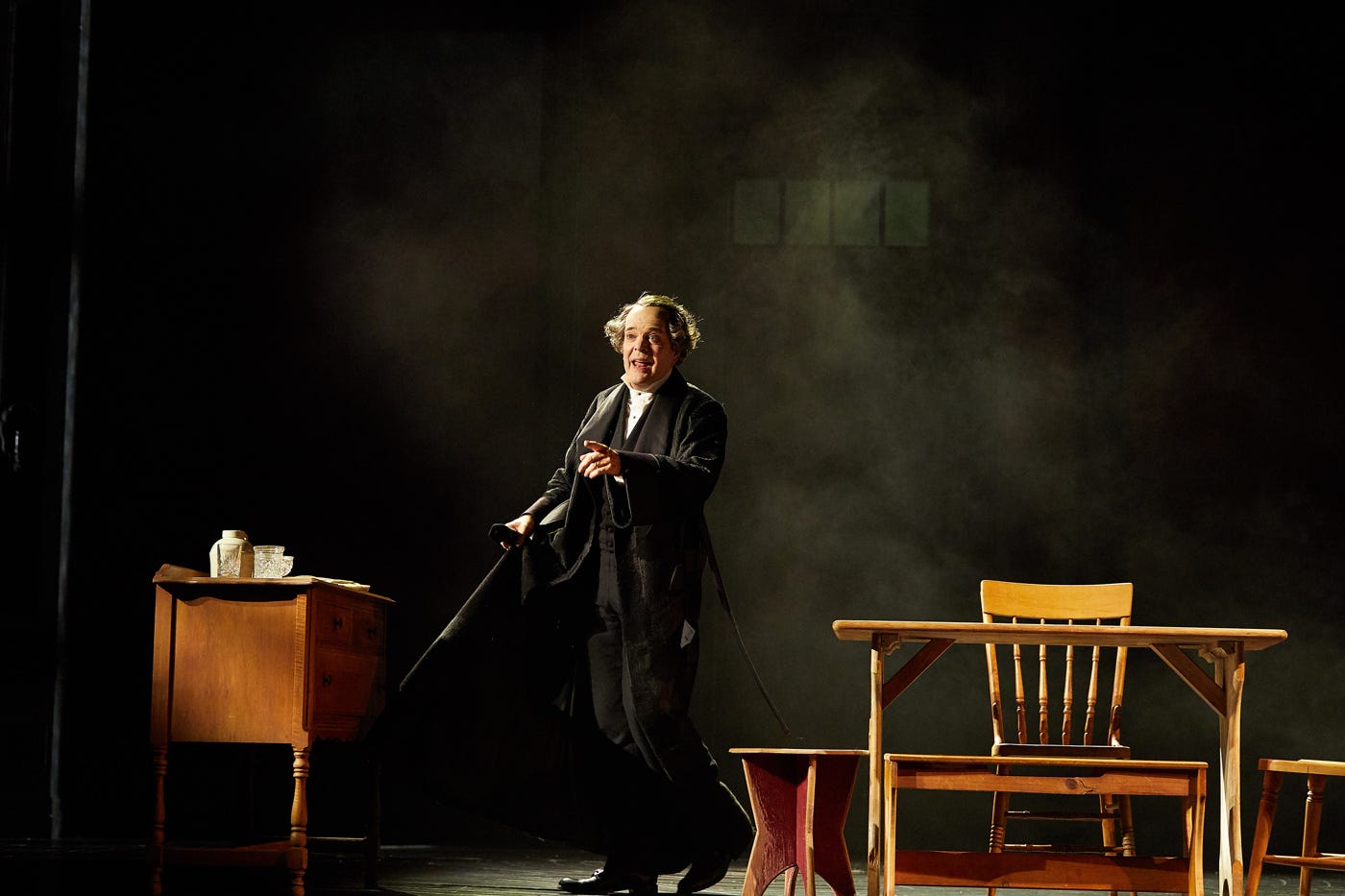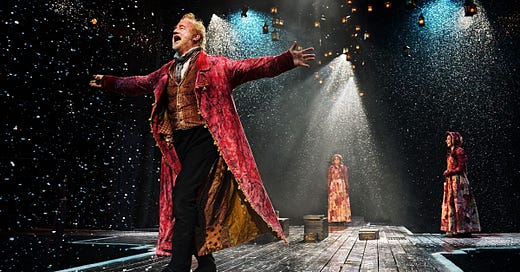Christmas Charity Donations
On Scrooge, on Dickens, on the season of giving, on the spirit of Christmas
It’s the season of giving. We’re reminded of this regularly — by the ringing of Salvation Army bells on street corners, by can drives at schools, by the countless email blasts from different charities. It’s time for us to support those in need and give back to our communities. By doing so, we can rid ourselves of our inner Scrooge.
I love the story of Ebenezer Scrooge. Each time I see a stage production of Charles Dickens’ A Christmas Carol, I am moved by its message. It’s a reminder of the value of reflecting on the past and those around us. It’s a story about change, growth, and compassion.
Charles Dickens was born to a middle-class family, but his father John was a spendthrift. After thrusting his family into a dire financial situation, John was sent to debtors’ prison, and Charles was forced to sell his books, leave school, and work in a factory. Dickens carried these memories — of poverty, of child labor — with him for the rest of his life.
In October 1843, at the age of thirty-two, Dickens traveled to Manchester to give a speech in support of the Athenaeum (an educational charity for the working class). In his speech, Dickens spoke against the same systemic poverty he experienced as a child: “Thousands of immortal creatures are condemned ... to tread, not what our great poet [Shakespeare] calls the ‘primrose path to the everlasting bonfire,’ but over jagged flints and stones laid down by brutal ignorance.” Dickens used his speech to critique the upper class folks who never shared any of their gains with those in need. And, at the time, there were a lot of people — especially children — who needed help: Thousands of children were living in poverty, and nearly half of all funerals in London were for children under the age of ten.
Initially, Dickens planned to write a pamphlet on the issue, but instead he decided to write a story (in part because he needed the income; he was cash-strapped after an expensive American tour the prior year). So, with these ideas and experiences stirring in his mind, Dickens sat down to write.
A Christmas Carol was published on December 19th, 1843.
In the story, businessman Ebenezer Scrooge is visited by the ghost of his former business partner Jacob Marley and the spirits of Christmas Past, Christmas Present, and Christmas Yet to Come. Through these visits — all of which occur over the course of one night — Scrooge is transformed from a cranky, selfish man into a kind, considerate person.
Early in the story, to establish Scrooge’s miserly and selfish demeanor, we see him visited by two people asking for donations for the poor. Scrooge dismisses their request, kicking them out of his office. He tells them: “Those unable to work should die and decrease the surplus population.”
Scrooge’s tune starts to shift when, in the middle of the story, the Ghost of Christmas Present appears, and two emaciated children named Ignorance and Want stumble out of the Ghost’s coat. The Ghost tells Scrooge: “Beware them both, and all of their degree, but most of all beware [of Ignorance], for on his brow I see that written which is Doom, unless the writing be erased.”
For author Chris Priestley, these two children capture the essence of A Christmas Carol. Priestley writes: “Dickens was chastising [readers] about their own ignorance — an ignorance that was in many cases a willful ignoring of the plight of their fellow Londoners.” A Christmas Carol was, in part, about opening up readers’ eyes to the plight of those around them.
The Ghost of Christmas Present also takes Scrooge to visit the household of his bookkeeper Bob Cratchit, where he observes the Cratchit family partaking in a celebratory but meager Christmas feast. At the feast, Scrooge sees Cratchit’s son Tiny Tim, a happy but ill and crippled boy. The Ghost tells Scrooge: “I see a vacant seat in the poor chimney corner, and a crutch without an owner, carefully preserved. If these shadows remain unaltered by the future, the child will die.” The Spirit then repeats Scrooge’s own words to back to him: “He had better do it and decrease the surplus population.” For Dickens, Tiny Tim was a stand-in for the impoverished children of London: Without support, he would die.

The relationship between Scrooge and Tiny Tim, between Scrooge and the two children, parallels the relationship Dickens saw between the wealthy and the poor. Dickens thought the distance between these two classes needed to be collapsed — the wealthy needed to do their part to help the poor. They needed to overcome their ignorance and support the Tiny Tims of the world.
At the end of A Christmas Carol, after being visited by the three spirits, Scrooge becomes “as good a friend, as good a master, and as good a man, as the good old city knew.” Scrooge woke up on Christmas morning and went about town doing good deeds. He found the two men who he originally turned away and gave them a large donation. He sent a massive turkey to the Cratchit household for their Thanksgiving feast. And he walked around town, wishing everyone a merry Christmas.
Dickens’ story quickly became a Christmas mainstay. The book’s first printing of 6,000 copies sold out by Christmas Eve 1843 (less than a week after its release). By February of 1844, two months after the story’s publication, almost a dozen theatrical productions had already sprung up. By the end of 1844, the book had sold over 15,000 copies. The story of Scrooge spread far and wide, influencing how the English-speaking world celebrated Christmas.
In turn, A Christmas Carol is often credited with establishing the tradition of holiday donations. Dickens story of a rotten man turning good by caring for those around him inspired a generation and generations to come. Because of Scrooge’s transformation, we donate to charity around the holidays. It’s why companies lead matching gift campaigns and the red buckets of the Salvation Army can be found in front of department stores.
Dickens established the idea of supporting the unknown poor during Christmas — to give to charity, to assist those we don’t meet everyday. A Christmas Carol not only normalized donating to charity; it also celebrated and moralized the act, showing how Scrooge became a better man through the act of giving.
Dickens lived by these ideals himself. He supported over forty charitable organizations throughout his life. Most notably, in 1846, he helped establish Urania Cottage, which provided housing and support for unwed mothers. He became so well known for his charity that, in an 1853 lecture, his friend William Thackery said of Dickens: “I take my share of the feast of love and kindness, which this gentle, and generous, and charitable soul has contributed to the happiness of the world.”
The spirit of Christmas is the spirit of giving. It’s Scrooge’s spirit. It’s Tiny Tim’s spirit. It’s Dickens’ spirit. And it has become our spirit.
Notes.
The following articles provided valuable information on the link between charity and A Christmas Carol: Bleecker Street Media, My City Magazine, and Denver Performing Arts.
A couple useful histories of A Christmas Carol: Smithsonian Magazine and Vox.
Chris Priestley writes on the meaning of Ignorance and Want here.
The Guardian provides a good look at the financial success of A Christmas Carol here.
The three photos are from the three productions of A Christmas Carol I’ve seen most recently. Each has something different to say about Dickens’ story, and if you’re in New York City and love A Christmas Carol as much as I do, I’d strongly encourage you to catch Jefferson Mays’ production. It’s spooky, masterful, beautiful, and moving.
Unrelated to any of the above, one of my favorite Christmas tales is from comedian Alex Edelman. He was raised in an Orthodox Jewish family and one year, for what he argues are very Jewish reasons, his family celebrated Christmas. Listen to his story here.





